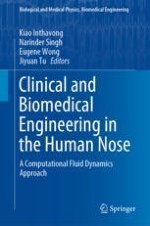2021 | OriginalPaper | Buchkapitel
8. Clinical Implications of Nasal Airflow Simulations
verfasst von : Dennis Onyeka Frank-Ito, Guilherme Garcia
Erschienen in: Clinical and Biomedical Engineering in the Human Nose
Verlag: Springer Singapore
Aktivieren Sie unsere intelligente Suche, um passende Fachinhalte oder Patente zu finden.
Wählen Sie Textabschnitte aus um mit Künstlicher Intelligenz passenden Patente zu finden. powered by
Markieren Sie Textabschnitte, um KI-gestützt weitere passende Inhalte zu finden. powered by
